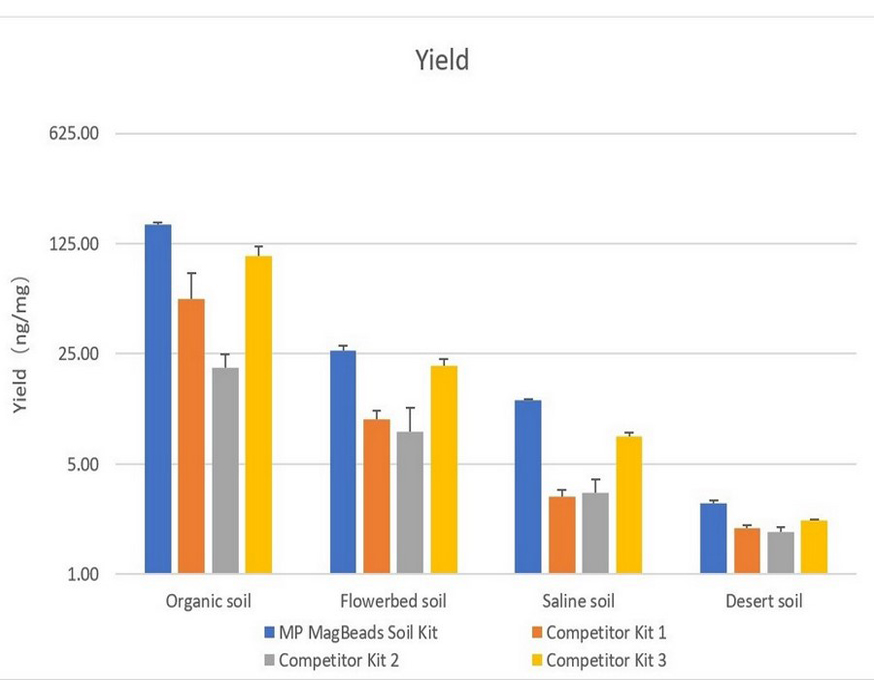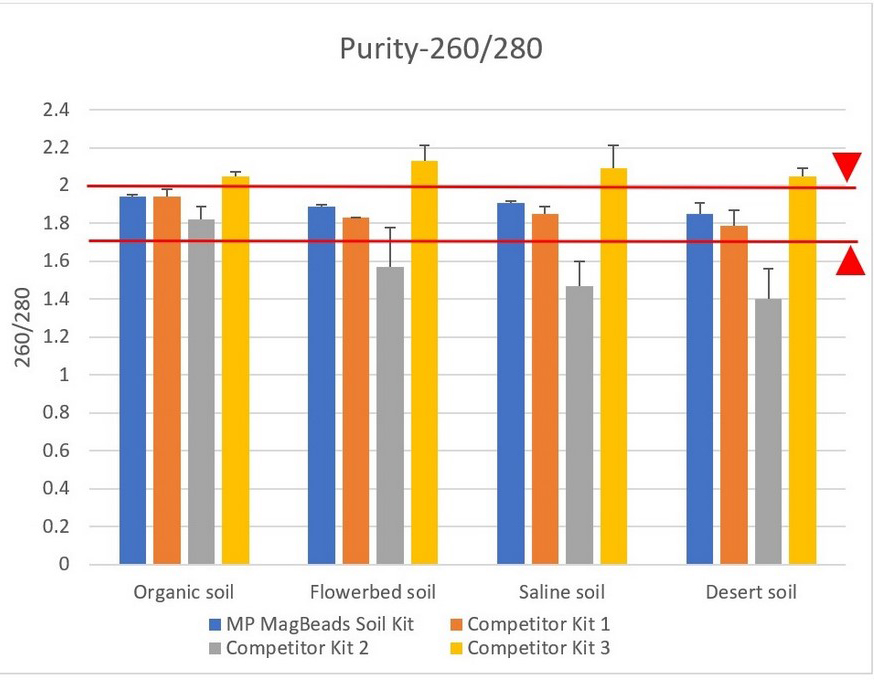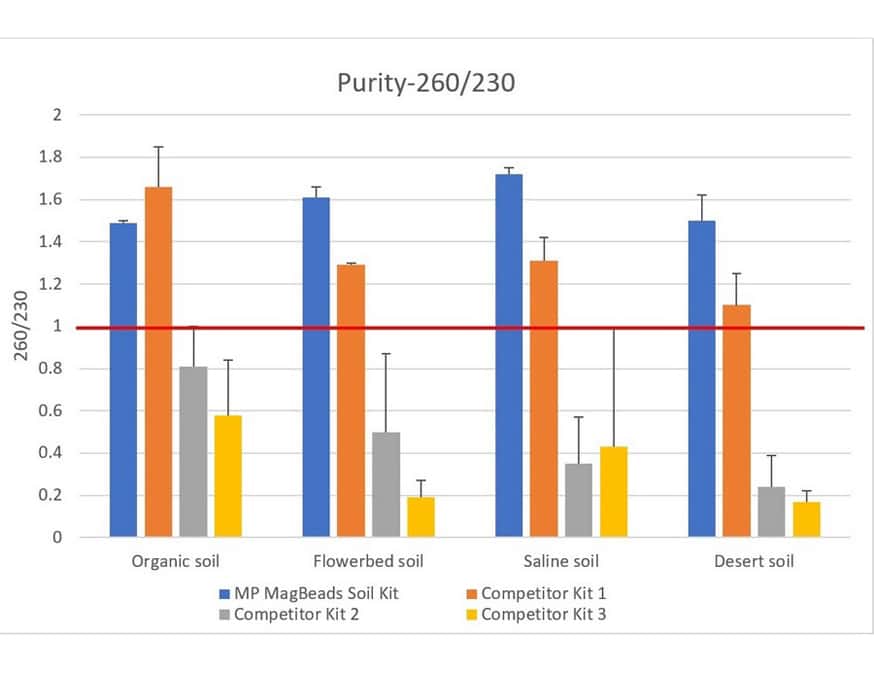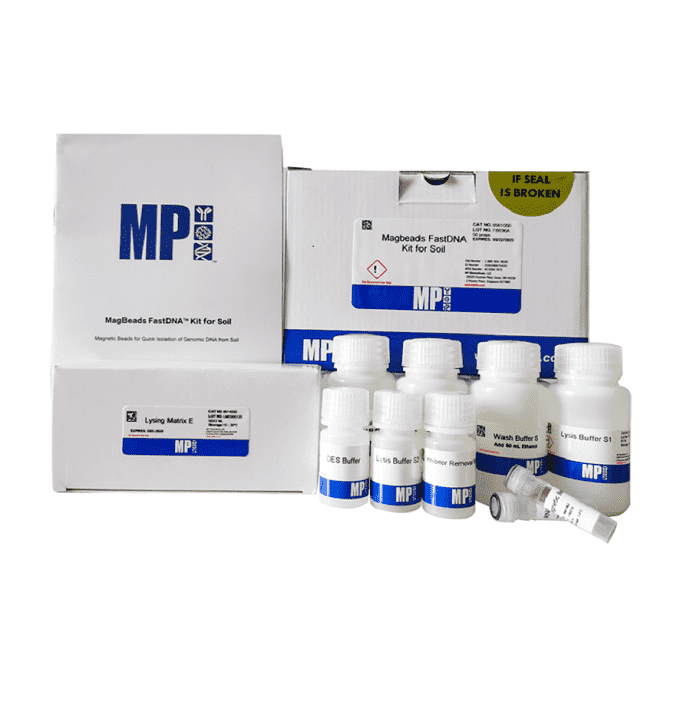Description
The MagBeads FastDNA™ Kit for Soil is designed to quickly and effectively isolate high-quality genomic DNA (gDNA) from soil in under 60 minutes. Samples are added to the provided Lysing Matrix E tubes, which are optimized for use with FastPrep® instruments from MP Biomedicals. These instruments efficiently break down bacteria, fungi, viruses, protists, and other microbial cells in just 40 seconds. For a higher sample homogenization throughput, FastPrep-96 (see Cat. No. 116010500)and Lysing Matrix E, 96-tube racks (see Cat. No. 116984001 can be used to efficiently scale up sample processing. The cleared lysate can then be transferred to tubes or a 96-deep well plate. After addition of magnetic beads and binding solution, DNA is adsorbed onto the surface of the beads, and impurities such as proteins and other inhibitors are washed away.
This kit is versatile and can be used with most automated nucleic acid extraction platforms available in the market. Alternatively, extractions can be performed manually using microcentrifuge tubes (see Cat. No. 115081500 and 115083500) or 96-deep well plates (see Cat. No. 115095050) with a magnetic stand (see Cat. No. 116570413, 116570426, and 116570429).
The kit is equipped with reagents specially formulated to remove common inhibitory substances found in soil samples, such as humic acid, polysaccharides, phenolic compounds, and enzyme inhibitors. The kit has been tested with a wide array of soil types, including organic soil, sediment, sludge, compost, rhizosphere, permafrost, saline, and desert soil. The output is highly pure gDNA that is suitable for a variety of molecular biology applications, such as PCR, NGS (Next-Generation Sequencing), shot-gun sequencing, restriction digestion, electrophoresis, and other desired laboratory techniques.
Performance Data
MagBeads FastDNA™ Kit for Soil has been meticulously designed to deliver higher yields of pure genomic DNA (gDNA) from environmental samples compared to competitor kits. Effective lysis in combination with efficient removal of contaminants and PCR inhibitors results in highly pure DNA. The integrity of DNA is determined by the presence of visible smearing of bands during gel electrophoresis. The purity of extracted DNA was determined with spectrophotometric analysis by measuring and calculating the ratio of the absorbance at 260 nm and 280 nm (A260/A280). The level of contaminants in the DNA extracted was determined similarly with spectrophotometric analysis by measuring and calculating the ratio of absorbance at 260 nm and 230 nm (A260/A230). Strong absorbance around 230 nm can indicate that organic compounds are present in the purified DNA. A A260/A230 ratio of 1.0 or above is generally considered an ideal purity level.
Higher Yields

Figure 1: MagBeads FastDNA™ Kit for Soil achieved better yields across various types of soil samples as compared to competitor 1 (T), 2 (O), 3 (Q) kits.
Higher Purity

Figure 2: Genomic DNA extracted with MagBeads FastDNA Kit for Soil (blue bar) consistently achieved A260/A280 ratios within 1.7- 2.0 across different types of soil samples. Competitors 1 (T), 2 (O), and 3 (Q) kits performance is also shown.

Figure 3: Genomic DNA extracted with MagBeads FastDNA Kit for Soil (blue bar) was generally free from contaminants as assessed by A260/A230 ratios above 1.0 across different types of soil samples. Competitors 1 (T), 2 (O), and 3 (Q) kits performance is also shown.
Both manual and automated protocols have been optimized to extract DNA of high yield and purity from different soil samples.
 |
M: 1 kb DNA marker |
Figure 4: Electrophoretic results of DNA extracted from different soil samples using an automated vs. a manual protocol. Gel image shows 3 µL of DNA from organic soil and 8 µL of DNA from each of the other soil types.


